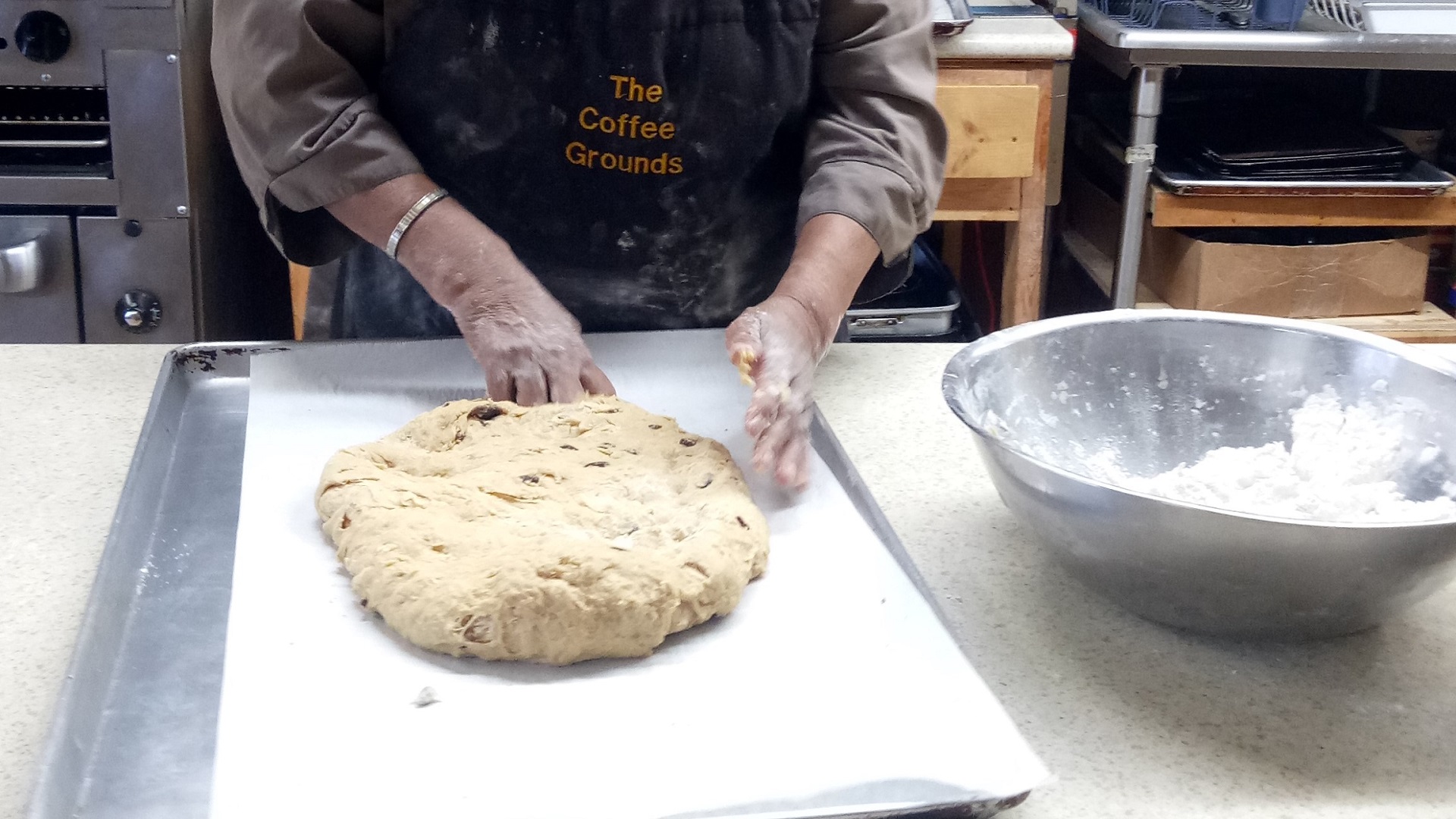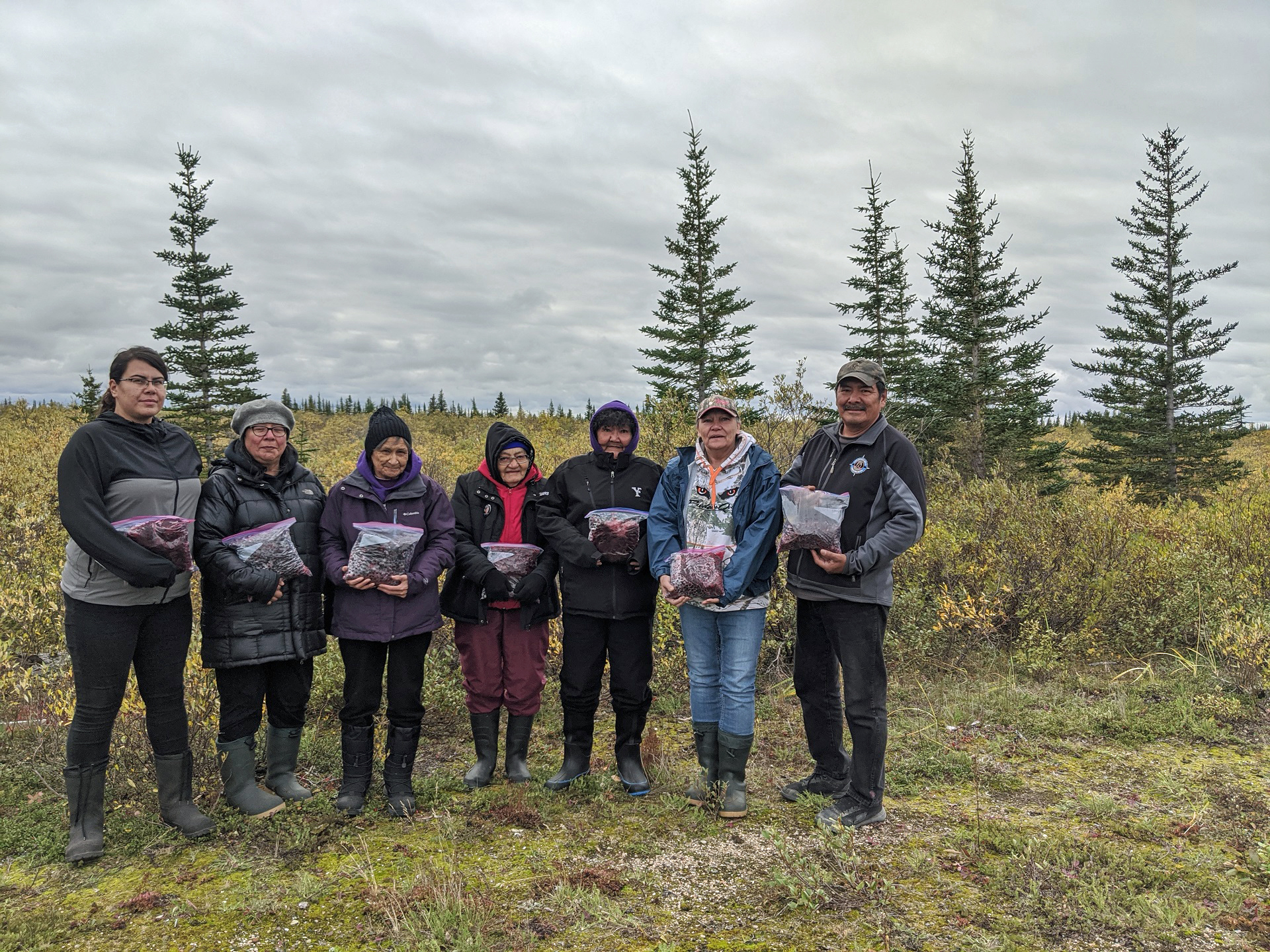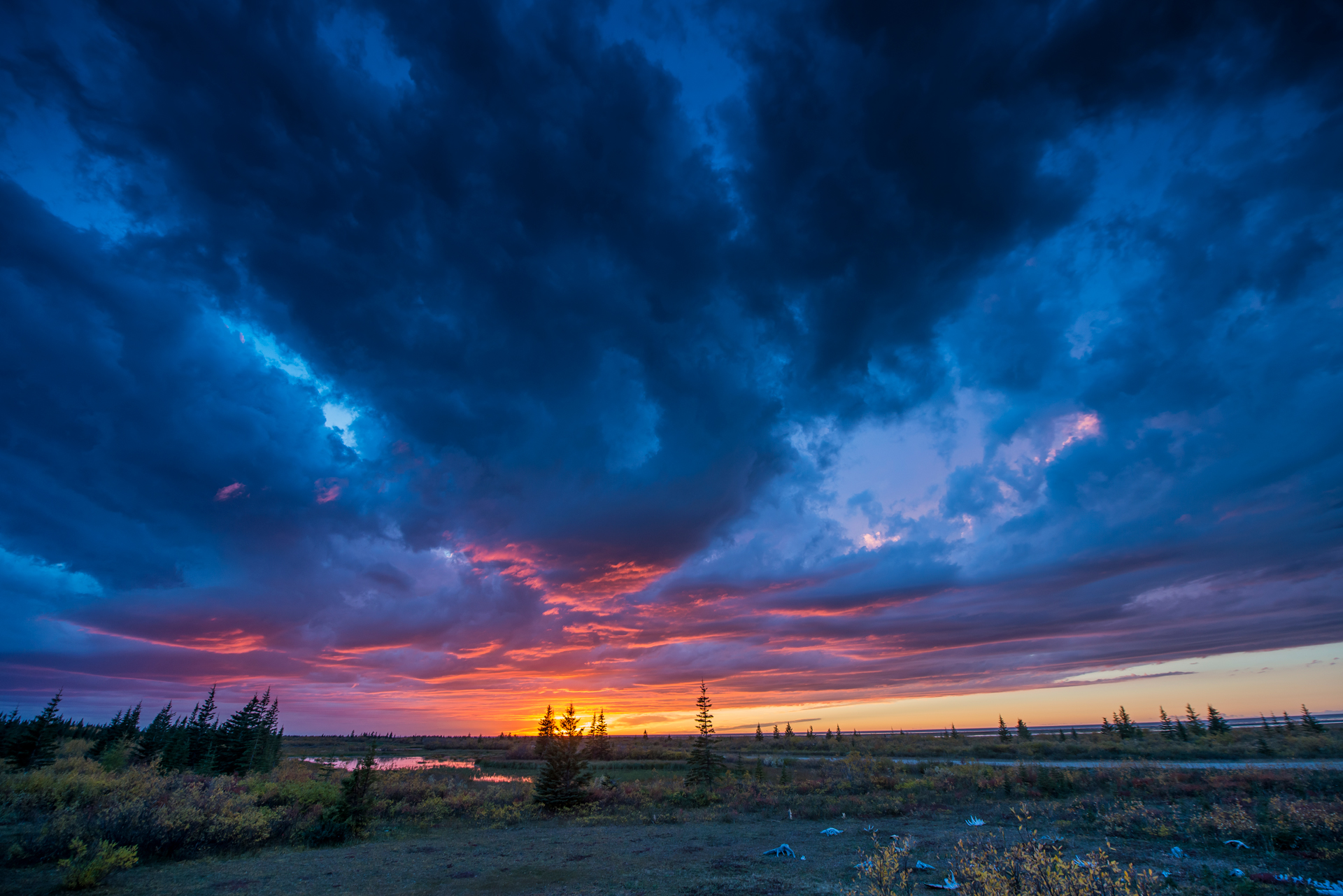by Nicole Spinks, Churchill Wild Lodge Manager
After spending some time in Churchill finishing off Caribou Hall, a place for Scouts and Girl Guides and the community to get to together, Ben Lawrence and I, along with a small team, moved southeast to Nanuk Polar Bear Lodge for more — you guessed it — construction!
We traded our grinders and paint brushes for mechanics and carpenters. Nanuk’s Rhinos, six-wheelers, and snowmobiles are getting a mechanical overhaul. The Rhinos are a specially designed vehicle for exploring the coastal flats and we’re still making tweaks to increase their comfort and performance. We’ve also got a carpentry team on site giving new life to our staff cabins.
The last time I was at Nanuk was during the Den Emergence Quest in March, and it was covered in snow, so to see the boreal forest in all its glory, boasting a wonderful array of fall colours, has been amazing.
During our stay we were lucky enough to host a few Ininewak friends from nearby York Factory First Nation for a few days while they collected berries, lived off the land, and shared stories of their people, the land, and their way of life.
One afternoon while harvesting gooseberries the ladies showed me different plants and explained what they are used for. A few interesting ones they showed me were rat root, Labrador tea, pineapple weed and Hudson Bay lettuce.
Rat root is used to treat coughs and colds. You can boil it for eight minutes to make a tea, or it can be used like a cough drop to soothe throats, coughs, and chest congestion like a Halls or Fisherman’s Friend lozenge. When Georgina was telling me about the boiling time, she said it was especially important to follow the eight-minute guideline and not to over steep. Labrador tea leaves can also be steeped for tea and used to soothe coughs, as well as anxiety. It is best consumed before bed.
Pineapple weed is useful for acne and eczema. It can be crushed and rubbed directly on the affected area or you can bathe with it, as you would with Epsom salts.
Hudson Bay celery or lettuce is a bright green leafy plant that grows along the edge of the coastal flats and in small freshwater streams. These leaves can be harvested and eaten in salads or put into stews. As the ladies tell me, it goes well in a rabbit stew.
While we picked berries, I was told that when harvesting anything from the land it’s important to give thanks. Traditionally this is done with tobacco and thanks is given to the Creator, Mother Earth, the spirits, and each other. This practice is to demonstrate appreciation for a plentiful harvest and hope that there will be future harvests.
While out on the land we saw a caribou walk past the berry patch and into the flats, as well as hundreds of geese flocking to begin their migration south. This prompted Sally to share with me how her family hangs and smokes most of the protein they hunt. Moose, caribou, and goose get hung up over fires or put into smoke houses to cure, so that they last for longer periods of time. Fish is also handled in the same way. Anything harvested from the land is shared among all families in the community.
Proper hunting and harvesting techniques are important traditions that are passed along from the elders, generation after generation. These traditions are becoming more meaningful and significant to pass along before they are lost.
Back at the lodge, dinner preparations were starting. Our long-time guide Albert “Butch” Saunders was preparing a fish fry and Sally was making bannock. I’ve made bannock before, but it didn’t turn out as wonderful as hers! She mixed the flour and baking powder and then poured in oil and water. No measuring required. She mixed everything together by hand, spread it on a baking tray, poked it with a fork, then into the oven it went. It rose and browned beautifully. A quick flip to brown the other side and it was done.

Making traditional bannock at Nanuk Polar Bear Lodge.
While that bannock was baking, Sally began mixing another one. This one was a sweet bannock which tasted like a hot cross bun. Delicious! A small spoonful of white sugar, large dollop of molasses, and a good helping of raisins are added to the original bannock recipe. Traditionally made with white sugar that has been burned over the fire, the more you brown or burn the sugar the sweeter and darker the bannock becomes. The sweet bannock was baked in the same fashion as the original recipe.
Another way of cooking bannock is to fry it in lard over the fire. Lard is used many times in their cooking in place of butter. This bannock has more of a doughnut-like look, flavour, and texture. Butch recommends putting a little butter and jam on the fried bannock for a sweet treat. (Download our bannock recipe!)
The day the group was scheduled to fly out we had an intense storm. With winds over 100 km/h, rain, and snow, no one was going anywhere. We all hunkered down next to the fireplace in the warm and cozy lodge. Watching the wind rip through the trees brought on thoughts of past generations and how they would have handled this storm and others like it. It was humbling to see the power of Mother Nature, knowing the strength it would have taken to thrive in this environment.
The berries collected, recipes shared, and knowledge gained made this trip a resounding success!
I’ll leave you with a piece of knowledge I gained that I likely won’t ever make use of. Apparently, you can collect the spray from a skunk’s scent glands to produce an immune boosting cocktail. I don’t know about you, but I don’t think I’m ready to trade in my multi-vitamin or Emergen-C® just yet.
Would you be game?














Great story, Nicole! Wonderful you guys helped with the Caribou Hall in Churchill.
I enjoyed the stories about the plants. It reminded me that years ago I had a chest cold and Butch gave me some rat root to make tea. I put the root into the mug and made tea. After drinking it my heart was pounding, my limbs were jittery and I felt as though I’d drunk several coffee pots. When I told Butch, he laughed. “You were only supposed to boil a little bit of the root, not the whole root.” I didn’t sleep for something like 36 hours. But my cold was gone. I think Butch did that on purpose : )
Thanks for the big smile and giggle Jad! Glad to hear the rat root worked though! Let’s hope you can be here again next season and we can do some more live field testing. 🙂
Thanks – so interesting- always great to learn about medicinal plants in different regions. Our pharmacognosy/natural products professor in pharmacy school really instilled a passion for this, though I would lack confidence to identify in the wild! That’s another part of preserving the earth and its biodiversity – we never know where the next lifesaving medicine may come from. Your part of the world is high on my list for when we can safely travel again!
Always a learning experience up here Liz! And we had some great teachers for this! We certainly agree that the next lifesaving medicine could come from anywhere, including the Arctic tundra. You just never know! Thanks for your interesting perspective. We hope you will be able to visit some day!
My great grandpa, who immigrated from Italy in 1888, lived for a while in La Macaza north of Montreal. It was named after a Chief who lived in the area. I wonder now if the ointment he made with a skunk’s scented gland was taught to him by the indigenous people who lived there. I’m beginning to believe they also helped him survive. It was pretty much bush out there 100 years or so ago. He was very industrious, when he left Italy he brought a medical book. He used it to treat people while working on the railway. He ordered prescriptions using a doctor’s name who contributed to the book. My great grandpa’s name was Gaetano DiPatria. Thank you for your story.
What a great story Tony! And you are correct, the indigenous people helped many of the newcomers to Canada survive. It also sounds like your great grandfather Gaetano was a very kind and helpful man. Thank you for taking the time to share his story here!